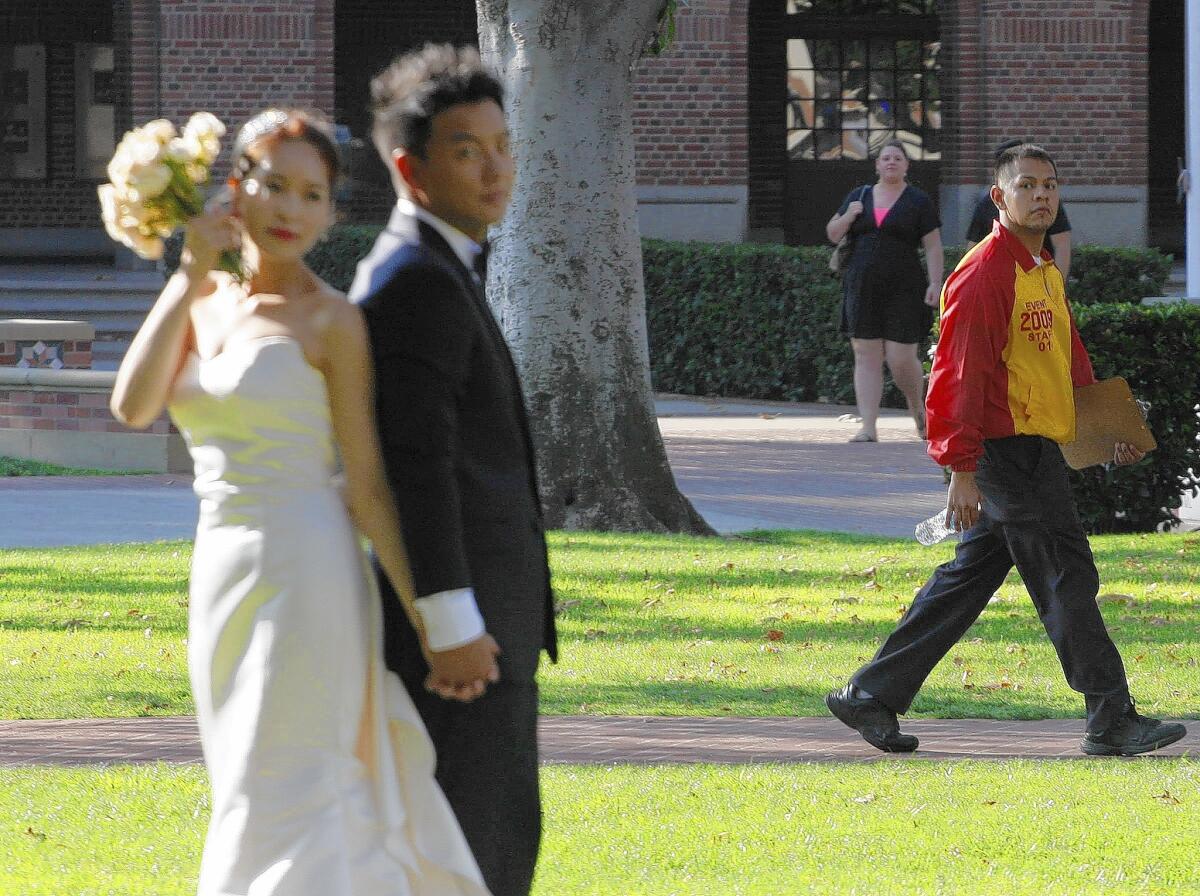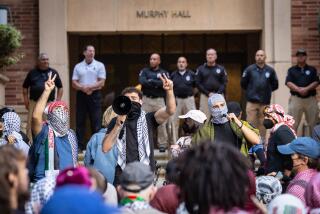After three killings, USC tries to better protect foreign students

New security measures announced Friday by USC after the slayings of three Chinese graduate students in the last two years are receiving a mixed reception on campus and in the Chinese community.
Some students see the moves as important steps in the right direction while others wonder if they will be enough.
The changes comes two weeks after a 24-year-old graduate student was beaten to death just blocks away from campus, an attack that renewed demands from USC’s Chinese community for increased security. USC has the largest foreign student population of any U.S. university; about 3,000 of its 8,000 international students are from China.
The university will require international graduate students to take “extended safety education” programs, create an international student safety advisory group and train campus police about the different cultures of students on campus.
John Thomas, chief of USC’s Department of Public Safety, said he hopes improved cultural understanding on both sides will keep students safer. Some students come from countries where crime is less common, he said, while others are raised in cultures that fear police.
“I don’t know if 911 translates to something that exists in all the students’ countries, so we need to explain it,” he said. “I want them to understand that in this democracy the police work for them, and we are here to serve them.”
Other security measures announced by USC include more patrols by campus security and Los Angeles Police Department officers in the neighborhoods around the campus, expansion of a free ride service offered to students and more staff members to monitor surveillance cameras.
The university will also extend the deployment of unarmed security “ambassadors” to summer months. They were previously in place only during the school year, which drew criticism after the death of Xinran Ji, an engineering student from China who was fatally beaten with a baseball bat about 12:45 a.m. July 24.
The changes mark the latest in a string of security improvements that USC has made since 2012, when two students were shot and killed during a botched robbery near campus. Six months later, a man opened fire outside a Halloween party on campus, injuring four people who were not students.
Security on and off campus was amplified. The university installed dozens more surveillance cameras and license-plate readers. The LAPD created a 30-officer task force focused on the campus and the surrounding neighborhood. USC also limited public access to campus in the evenings and added fingerprint scanners at dorm entrances. About 1,500 feet of fencing went up along the school’s 2-mile perimeter.
USC reported a drop in property crimes in 2013 that officials attribute to the actions. A Times analysis of LAPD crime data showed violent crime also dropped.
The campus has been on edge since Ji’s death. Four teenagers have been charged in his slaying, which authorities said began as a robbery.
Ji’s death was particularly hard for USC’s Chinese community. In 2012, Ying Wu and Ming Qu, two 23-year-old graduate students in the electrical engineering program, were shot to death about 1 a.m. while sitting in a parked BMW just west of campus. The students’ parents filed a wrongful-death suit against the university, saying the school misled them when it said it ranked among the safest in the nation. The suit was dismissed.
After Ji’s death, Wu and Qu’s parents called for the Chinese government to issue a “study advisory” that would alert Chinese parents of the safety risks they said came with attending USC.
Daniel Deng, an attorney who has served as a volunteer spokesman for Wu and Qu’s parents, said Friday that the new security efforts were a step in the right direction. But, he said, the parents are worried the extra measures will give incoming students from China a false sense of security that once again the campus is safe.
“USC needs to be truthful to the reality that the surrounding area is just not safe,” Deng said.
Xu Yuan, the president of USC’s Chinese Students and Scholars Assn., said university officials formally met with his group twice to discuss their safety concerns. His group wrote one of two online petitions that called on USC to take action — their demands were among the new measures announced by the university.
“So far, USC has shown that they are taking what we’ve petitioned for very seriously,” Yuan said, calling the new measures a good step.
But, he cautioned, it was too early to know if these measures would be enough to prevent something from happening again. “Only time will tell,” he said.
Twitter: @katemather
Twitter: @lacrimes
Twitter: @RosannaXia
Times staff writers Caitlin Owens and Armand Emamdjomeh contributed to this report.
More to Read
Sign up for Essential California
The most important California stories and recommendations in your inbox every morning.
You may occasionally receive promotional content from the Los Angeles Times.













